Indian Air Force Receives First Indigenously Produced Loitering Munition
The Advanced Loitering System-50 (ALS-50) loitering munition will enhance the IAF's ability to conduct precision strikes in areas with limited infrastructure.
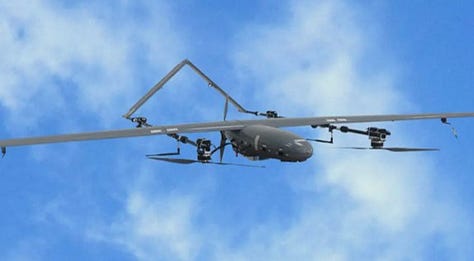
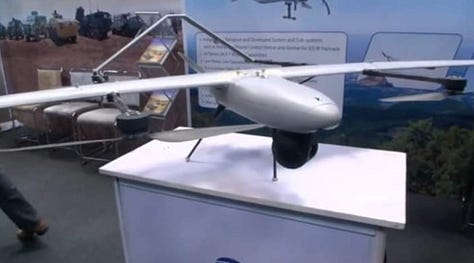

The Indian Air Force (IAF) received the first units of the Advanced Loitering System-50 (ALS-50) loitering munition from Tata Advanced Systems Limited. The IAF will receive 100 units from Tata and all units are scheduled to be delivered by the end of 2023.
The Indian Air Force (IAF) received the first units of the Advanced Loitering System-50 (ALS-50) loitering munition from Tata Advanced Systems Limited. The IAF will receive 100 units from Tata and all units are scheduled to be delivered by the end of 2023. The munition is a Vertical Take-Off and Landing (VTOL) drone that is approximately 8 feet long (2.4 m) with a wingspan of 12.5 feet (3.8 m). The munition’s range is about 31 miles (50 km) and has a reported endurance of more than one hour. The ALS-50’s has a reported cruise speed of 62 m/h (100 km/h) with a maximum takeoff weight of 100 Ibs (50kg). The drone can operate in temperatures from -22F to 122F (-30C to 50C) and can be launched and recovered from an elevation of approximately 10000 feet (3000 m). The system also has a service ceiling of at least 13000 feet (4000 m).
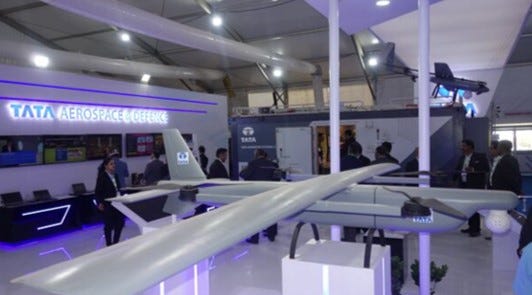
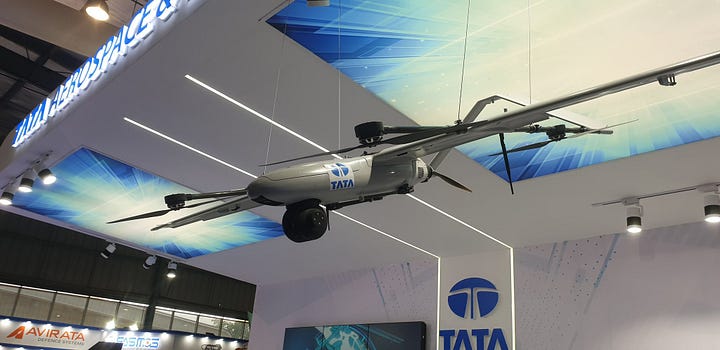

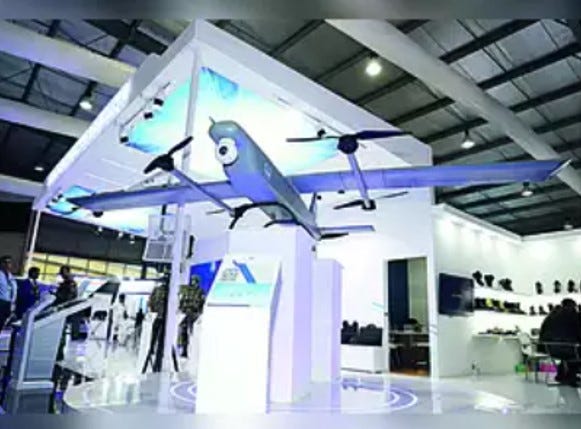
The munition has five modes: fully autonomous, semi-autonomous, loiter, attack, and return home modes and is fitted with an Electro-Optic/Infrared (EO/IR) turret mounted under its chin. The sensors enable the operator to receive real-time video and to select an appropriate attack mode depending on the current situation.
The munition has five modes: fully autonomous, semi-autonomous, loiter, attack, and return home modes and is fitted with an Electro-Optic/Infrared (EO/IR) turret mounted under its chin. The sensors enable the operator to receive real-time video and to select an appropriate attack mode depending on the current situation. The ALS-50 can use GPS to navigate and locate targets autonomously or with a pilot. The ALS-50 can carry various anti-personnel or anti-armor warheads (including Explosively Formed Penetrators) that weigh up to 13 Ibs (6 kg). Accuracy tests conducted by both Tata and the IAF indicates the loitering munition’s accuracy is less than 6 feet (2 m). It also has a dynamic attack capability, meaning the system can be aborted, re-attack, or recover and reuse depending on the circumstances.
Tata has plans to integrate Artificial Intelligence (AI) and swarming capabilities into the ALS-50 in the future if the Indian military requests it. The company also has plans to offer the loitering munition for export to other countries due to the rise in global demand for systems. The system’s VTOL capability enables it to be operated in areas where limited space is available such as narrow valleys, mountain positions, jungle clearings, and naval vessels.
Analysis: The new loitering munition system will increase the IAF’s ability to conduct precision strikes in areas with limited infrastructure and space such as Ladakh, Arunachal Pradesh, and other areas along the Chinese Indian border. For example, the IAF will have the capability to accurately strike a variety of soft and hard targets – such as troop formations, armored vehicles, and bases – due to the ability for the drone to be equipped with different warheads. Additionally, the drone will also enable the IAF to reduce their reliance on either civilian airports or military airbases due to its VTOL capability allowing it to launch vertically but fly like a fixed-wing drone. The ALS-50 will also give the IAF the capability to monitor the border more effectively for any incursions made by the People’s Liberation Army (PLA) or Chinese border units. However, the potential for the ALS-50 to integrate both AI and swarming capabilities in the future will enable the IAF to increase the drone’s effectiveness and lethality in the future. The drone will also likely be acquired by the Indian Navy since it can be launched and recovered from ship decks and has the capability to target and strike naval vessels.



